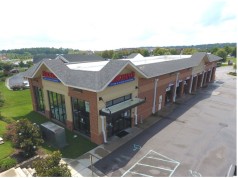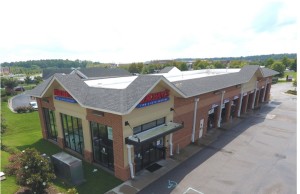Environment Virginia, Congressman Jim Moran, and the BlueGreen Alliance Give Springtime Energy-Saving Tips and Tour Local Super-Efficient Home
Arlington, VA – March 29, 2013 – (RealEstateRama) — With spring-cleaning around the corner, Environment Virginia, Congressman Jim Moran, and the BlueGreen Alliance came together today to outline top tips for home and business owners to clean up their energy use and protect our environment, and to tour the Sklars’ house, a super-efficient home in Arlington.
“We can sweep wasted energy and global warming pollution out the door by making our buildings more energy efficient and by powering them with clean, renewable energy,” said Meredith Epstein, Energy Associate at Environment Virginia.
More than a third of the energy we use in the United States goes toward powering the buildings where we live and work. Because much of this energy comes from fossil fuels including coal and gas, powering America’s buildings is responsible for 30 percent of our nation’s global warming pollution, which is fueling a warmer planet and more extreme weather events like flooding from Tropical Storm Lee.
Much of this energy is wasted through leaky windows, inefficient lighting, heating or cooling systems, and poor construction techniques, and Environment Virginia says there are easy things all home-owners can do to cut down on energy use and energy waste.
“Taking the small steps Environment Virginia outlined today will make your home more energy efficient and have big benefits for your utility bill and the environment,” said Rep. Moran. “Improving the energy efficiency of homes and buildings makes good public policy and common sense. Consumers and businesses save money; we strengthen our resiliency against volatile and disruptive energy price shocks; and we reduce the amount of harmful toxins and greenhouse gases released into the air.”
“Incorporating high value energy efficiency and renewable energy in my home and my office building reduce electricity bills and future utility increases, ensure I have no outages, eliminate the pollution and greenhouse gases associated with energy, protect me from electric surges, and provide optimum comfort for my family and business associates,” said Scott Sklar, President of The Stella Group, Ltd, and Adjunct Professor at The George Washington University.
“To protect our environment, more of our buildings should be like the Sklars’ house,” said Epstein. “But any homeowner or business owner can make simple improvements now to cut their energy use as we head into warmer weather, like installing ceiling fans, covering your windows with drapes or blinds, and cleaning your air conditioner.”
“Increasing energy efficiency in homes, businesses and other buildings is an easy way to lower utility bills and put a dent in lowering carbon emissions,” said Lee Anderson, Senior Policy and Legislative Advocate for the BlueGreen Alliance. “The benefits of energy efficiency improvements don’t stop at the walls of these buildings. Buying made-in-America efficient appliances and hiring local workers to make these improvements also puts money and jobs back into our own communities.”
President Obama announced a new goal in this year’s State of the Union to reduce our nation’s energy waste 50 percent by 2030.
“The White House’s commitment to energy efficiency reinforces the 2030 Challenge and Section 433 of the Energy Independence and Security Act 2007, which requires that all new Federal buildings and major renovations meet substantial energy reduction targets,” said Edward Mazria, CEO of Architecture 2030.
“In order to cut global warming pollution and protect our environment, President Obama and his administration, as well as our local and state elected officials, must take bold steps to make our buildings more energy efficient, and to make it easier for home and business owners to make energy efficiency and renewable energy improvements to their buildings,” added Epstein.




